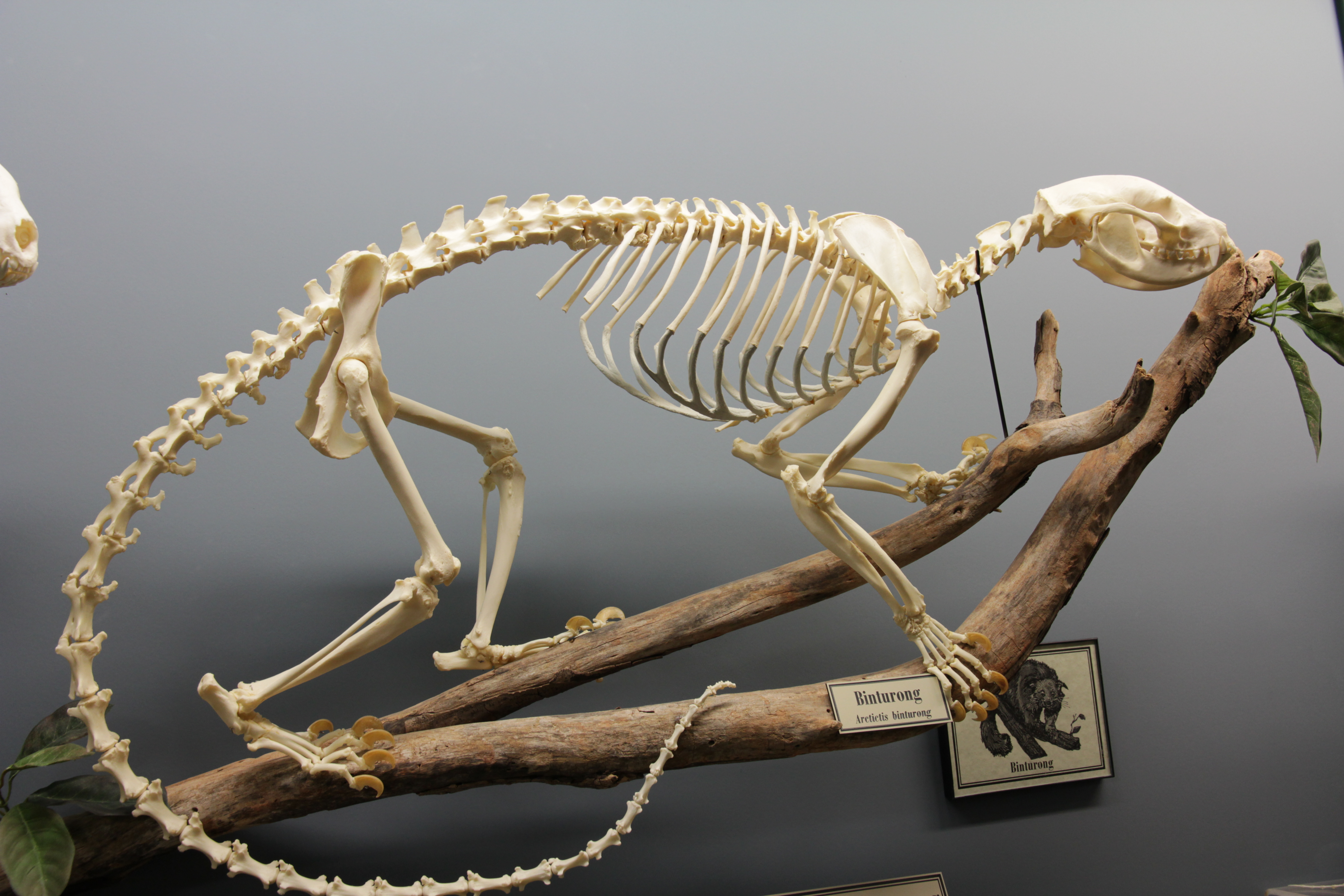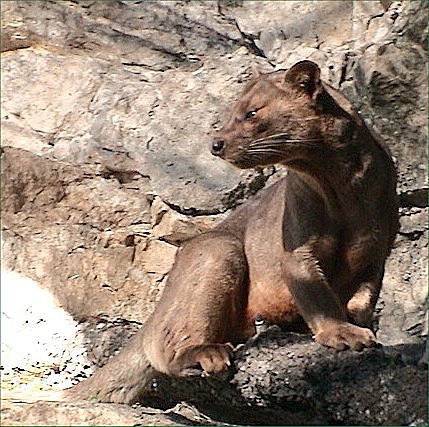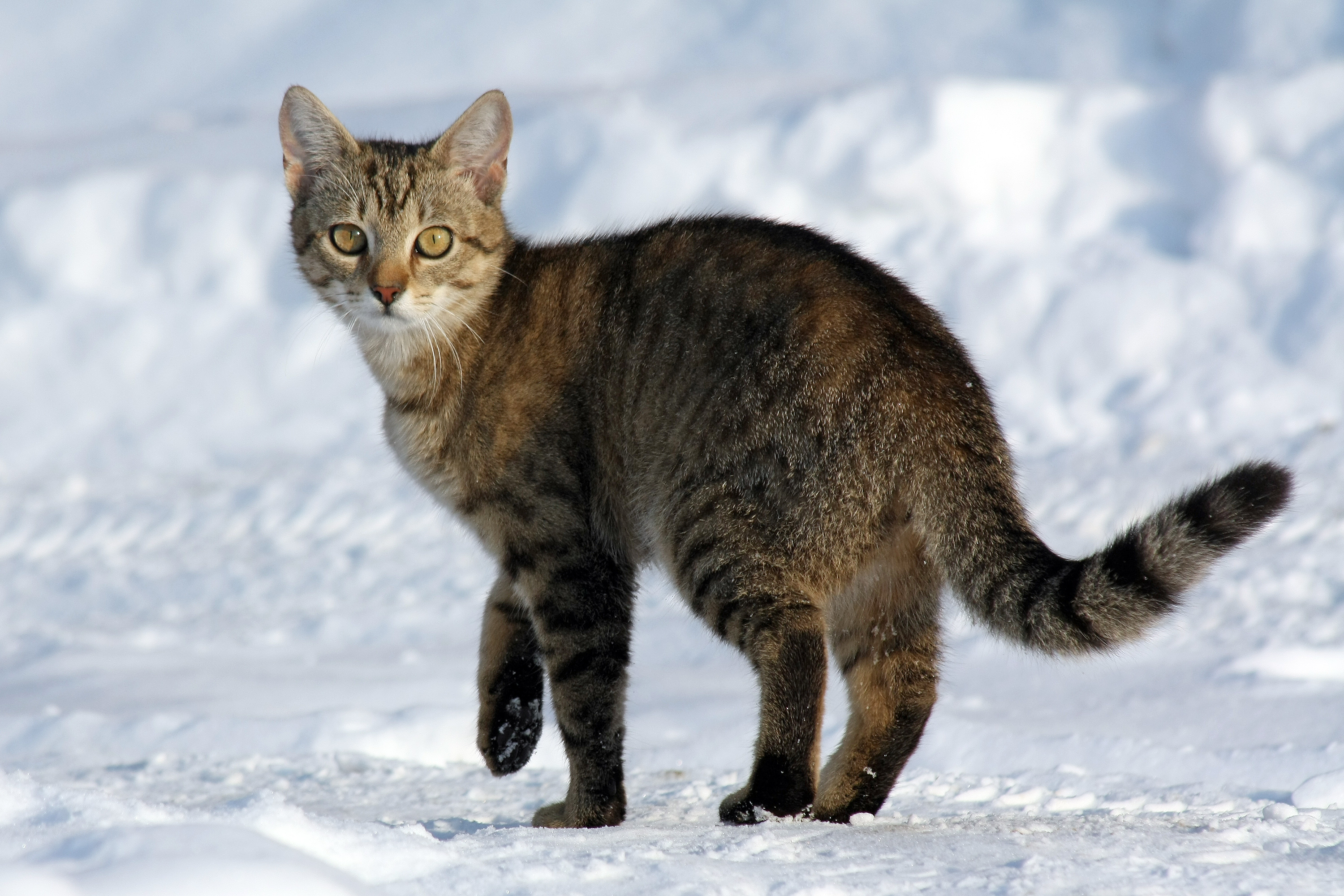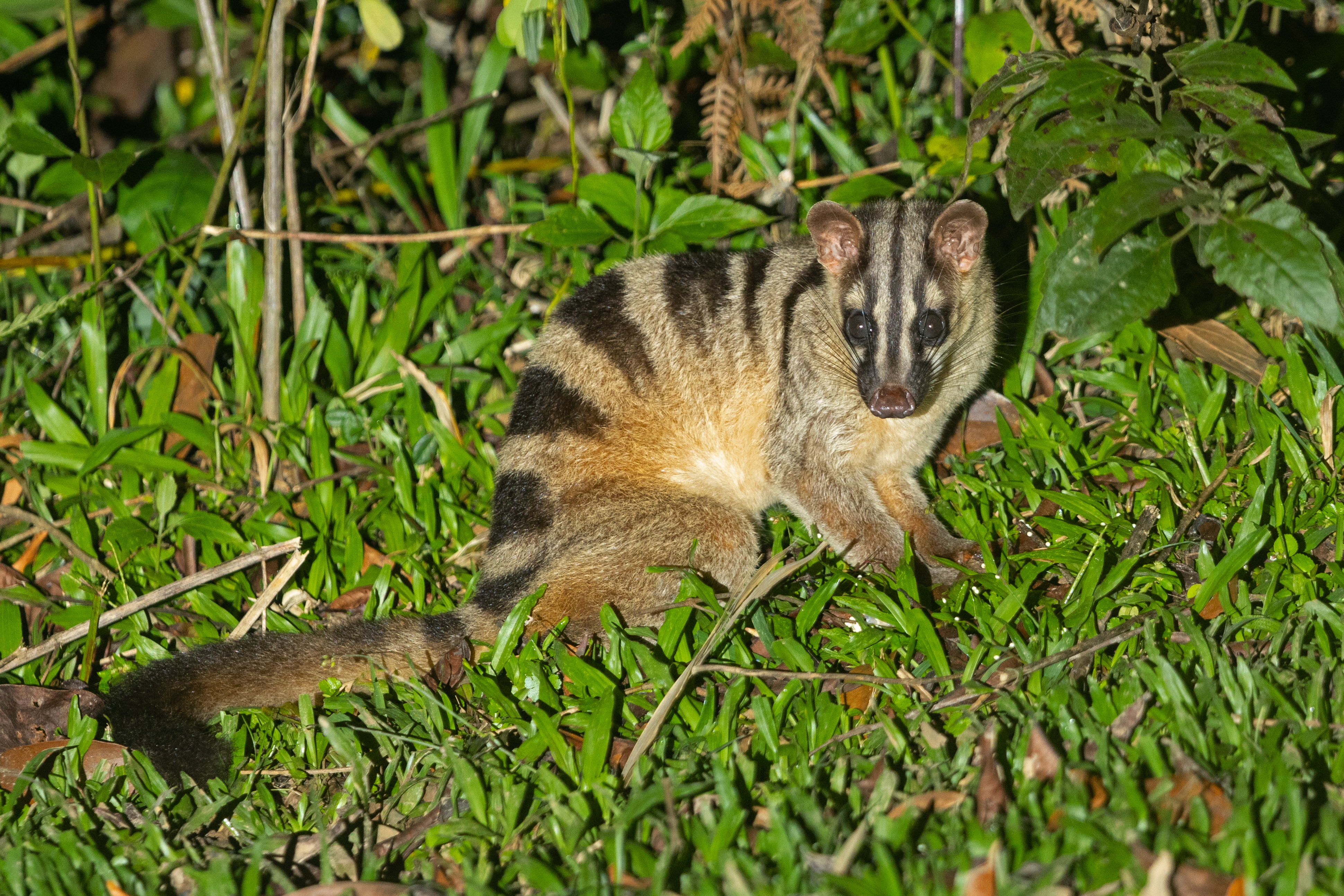|
Palm Civet
Palm civet is the common name of several species of feliform carnivorans in two families. *Family Nandiniidae: ** African palm civet (''Nandinia binotata'') *Family Viverridae: **Small-toothed palm civet (''Arctogalidia trivirgata'') ** Owston's palm civet (''Chrotogale owstoni'') **Hose's palm civet (''Diplogale hosei'') ** Banded palm civet (''Hemigalus derbyanus'') ** Sulawesi palm civet (''Macrogalidia musschenbroekii'') **Masked palm civet (''Paguma larvata'') **Asian palm civet (''Paradoxurus hermaphroditus'') **Brown palm civet (''Paradoxurus jerdoni'') **Golden palm civet The golden palm civet (''Paradoxurus zeylonensis'') is a viverrid endemic to Sri Lanka. It is listed as Least Concern on the IUCN Red List since 2016.The extent and quality of its habitat in Sri Lanka's hill regions are declining. The golden pal ... (''Paradoxurus zeylonensis'') {{animal common name Feliforms Mammal common names ... [...More Info...] [...Related Items...] OR: [Wikipedia] [Google] [Baidu] |
Golden Palm Civet
The golden palm civet (''Paradoxurus zeylonensis'') is a viverrid endemic to Sri Lanka. It is listed as Least Concern on the IUCN Red List since 2016.The extent and quality of its habitat in Sri Lanka's hill regions are declining. The golden palm civet was described by Peter Simon Pallas in 1778. Taxonomy ''Viverra zeylonensis'' was the scientific name proposed by Peter Simon Pallas in 1778 for a palm civet specimen from Sri Lanka. Between the 19th and early 21st centuries, several zoological specimens were described, including: *''Paradoxurus aureus'' by Frédéric Cuvier in 1822 *''Paradoxurus montanus'' by Edward Frederick Kelaart in 1852 who described a fulvous brown palm civet from the mountains of Sri Lanka, which he considered a variety of the golden palm civet. *''Paradoxurus stenocephalus'' by Colin Groves and colleagues in 2009 who described a golden brown specimen from Sri Lanka's dry zone. They proposed to regard ''P. montanus'', ''P. aureus'' and ''P. stenocephalus ... [...More Info...] [...Related Items...] OR: [Wikipedia] [Google] [Baidu] |
Viverridae
Viverridae is a family (biology), family of small to medium-sized feliform mammals, comprising 14 genera with 33 species. This family was named and first described by John Edward Gray in 1821. Viverrids occur all over Africa, in southern Europe, South Asia, South and Southeast Asia on both sides of the Wallace Line. The word viverridae comes from the Latin word . The species of the subfamily Genettinae are known as Genet (animal), genets and Poiana (genus), oyans. The viverrids of the subfamily Viverrinae are commonly called civets; the Paradoxurinae and most Hemigalinae species are called palm civets. Characteristics Viverrids have four or five toes on each foot and half-retractile claws. They have six incisors in each jaw and Molar (tooth), molars with two tubercular grinders behind in the upper jaw, and one in the lower jaw. The tongue is rough with sharp prickles. A pouch or Anal gland, gland occurs beneath the anus, but there is no cecum. The male's Urinary meatus, urethr ... [...More Info...] [...Related Items...] OR: [Wikipedia] [Google] [Baidu] |
Common Name
In biology, a common name of a taxon or organism (also known as a vernacular name, English name, colloquial name, country name, popular name, or farmer's name) is a name that is based on the normal language of everyday life; and is often contrasted with the scientific name for the same organism, which is often based in Latin. A common name is sometimes frequently used, but that is not always the case. In chemistry, IUPAC defines a common name as one that, although it unambiguously defines a chemical, does not follow the current systematic naming convention, such as acetone, systematically 2-propanone, while a vernacular name describes one used in a lab, trade or industry that does not unambiguously describe a single chemical, such as copper sulfate, which may refer to either copper(I) sulfate or copper(II) sulfate. Sometimes common names are created by authorities on one particular subject, in an attempt to make it possible for members of the general public (including s ... [...More Info...] [...Related Items...] OR: [Wikipedia] [Google] [Baidu] |
Feliformia
Feliformia is a suborder within the order Carnivora consisting of "cat-like" carnivorans, including Felidae, cats (large and small), hyenas, mongooses, viverrids, and related taxa. Feliformia stands in contrast to the other suborder of Carnivora, Caniformia consisting of "dog-like" carnivorans (includes Canoidea). The separation of the Carnivora into the broad groups of feliforms and caniforms is widely accepted, as is the definition of Feliformia and Caniformia as suborders (sometimes superfamilies). The classification of feliforms as part of the Feliformia suborder or under separate groupings continues to evolve. Systematic classifications dealing with only extant taxa include all feliforms into the Feliformia suborder, though variations exist in the definition and grouping of families and genera.Taxonomic references - extant species (1): Supporting descriptive information and picturesDiversity Web (online) – Feliformia/ref>Taxonomic references - extant species (2)Integrated ... [...More Info...] [...Related Items...] OR: [Wikipedia] [Google] [Baidu] |
Carnivora
Carnivora ( ) is an order of placental mammals specialized primarily in eating flesh, whose members are formally referred to as carnivorans. The order Carnivora is the sixth largest order of mammals, comprising at least 279 species. Carnivorans are found on every major landmass and in a variety of habitats, ranging from the cold polar regions of Earth to the hyper-arid region of the Sahara Desert and the open seas. Carnivorans exhibit a wide array of body plans, varying greatly in size and shape. Carnivora are divided into two suborders, the Feliformia, containing the true felids and several animals; and the Caniformia, containing the true canids and many animals. The feliforms include the Felidae, Viverridae, hyena, and mongoose families, the majority of which live only in the Old World; cats are the only exception, occurring in the Old World and the New World, entering the Americas via the Bering land bridge. The caniforms include the Caninae, Procyonidae, bears, ... [...More Info...] [...Related Items...] OR: [Wikipedia] [Google] [Baidu] |
African Palm Civet
The African palm civet (''Nandinia binotata''), also known as the two-spotted palm civet, is a small feliform mammal widely distributed in sub-Saharan Africa. It is listed as least concern on the IUCN Red List. Characteristics The African palm civet is grey to dark brown with dark spots on the back. It has short legs, small ears, a lean body, and a long, ringed tail. It has two sets of scent glands on the lower abdomen and between the third and fourth toes on each foot, which secrete a strong-smelling substance used to mark territory and in mating. Adult females reach a body length of with a long tail and weigh . Adult males reach in body length with a long tail and weigh . The African palm civet's ear canal is not divided and cartilaginous at the end. Distribution and habitat The African palm civet ranges throughout much of sub-Saharan Africa from Guinea to South Sudan, south to Angola, and into eastern Zimbabwe. It has been recorded in deciduous forests, lowland rainfores ... [...More Info...] [...Related Items...] OR: [Wikipedia] [Google] [Baidu] |
Small-toothed Palm Civet
The small-toothed palm civet (''Arctogalidia trivirgata''), also known as the three-striped palm civet, is a viverrid native to dense forests of Southeast Asia and some of the easternmost parts of South Asia (Northeast India), from the Assam state of India to Indochina, Malay Peninsula, and Singapore, and on Sumatra, Bangka, Java, Borneo, and numerous small nearby islands of Indonesia. The first scientific description by John Edward Gray in 1832 was based on a zoological specimen from the Maluku Islands in the collection of the Rijksmuseum van Natuurlijke Historie in Leiden, Netherlands. It is blackish grey, has black paws and three black longitudinal stripes on the back. A monotypic genus, ''Arctogalidia'' means ‘bear-weasel’ (from ancient Greek '' arkto-'' ‘bear’ + '' galidia'' ‘little weasel’). The specific epithet ''trivirgata'' means ‘three-striped’ in Latin. The small-toothed palm civet is mid-sized by the standards of its family, weighing and measuri ... [...More Info...] [...Related Items...] OR: [Wikipedia] [Google] [Baidu] |
Owston's Palm Civet
Owston's palm civet (''Chrotogale owstoni'') is a viverrid native to Vietnam, Laos and a very small portion of southern China, in three counties located in the Yunnan province: Hekou, Luchun, and Jinping, and has never been found west of the Mekong River. It is listed as endangered on the IUCN Red List because of an ongoing population decline, estimated to be more than 50% over the last three generations, inferred from over-exploitation, habitat destruction and degradation. Taxonomy The Owston's palm civet was described by Oldfield Thomas in 1912 on the basis of a skull and skin of zoological specimen collected by Alan Owston by a river in Tonkin. ''Chrotogale'' is a monospecific genus. Characteristics The Owston's palm civet has a tawny buff-grey body with highly contrasted black markings on its back and tail, and four bands on its back. These bands run from around the eyes to the first third of the tail. It has large rounded ears and black eyes. is a mid-sized palm civet a ... [...More Info...] [...Related Items...] OR: [Wikipedia] [Google] [Baidu] |
Hose's Palm Civet
Hose's palm civet (''Diplogale hosei''), also known as Hose's civet, is a viverrid species endemic to the island of Borneo. It is listed on the IUCN Red List as Vulnerable because of an ongoing population decline, estimated to be more than 30% over the last three generations (inferred to be 15 years) and suspected to be more than 30% in the next three generations due to declines in population inferred from habitat destruction and degradation. ''Diplogale'' is a monospecific genus. Hose's palm civet was named after the zoologist Charles Hose by Oldfield Thomas in 1892. Hose collected the first specimen in Sarawak in 1891. What little is known of the species comes primarily from 17 museum specimens worldwide. Only in 1997, the first living specimen was obtained and released after two months. Hose's civet is not kept in captivity anywhere in the world. Characteristics The upperparts (from nose to tail tip, including outer surfaces of the four limbs) are dark brown to blackish br ... [...More Info...] [...Related Items...] OR: [Wikipedia] [Google] [Baidu] |
Banded Palm Civet
The banded palm civet (''Hemigalus derbyanus''), also called the banded civet, is a viverrid native to Indomalaya. They primarily inhabit lowland conifer habitat, which is under threat from encroaching human activity. It is estimated the population of the banded palm civet has decreased by around 30% in just three generations. Banded palm civets are usually approximately the size of a domestic cat; their fur is pale but with dark bands on the back. They are believed to be closely related to Hose's palm civets, which are similar in appearance and distribution. The banded palm civet is the only species in its genus, first scientifically described in 1837. The species comprises four subspecies, distributed across Indonesia and Southeast Asia. Two of the subspecies diverged from each other as long ago as 2.7 million years. Banded palm civets are affected by a variety of parasites, such as nematodes, and are primarily carnivorous, eating small animals such as rodents and bugs. They ... [...More Info...] [...Related Items...] OR: [Wikipedia] [Google] [Baidu] |
Sulawesi Palm Civet
The Sulawesi palm civet (''Macrogalidia musschenbroekii''), also known as Sulawesi civet, musang and brown palm civet is a little-known viverrid endemic to Sulawesi. It is listed as Vulnerable on the IUCN Red List due to population decline estimated to have been more than 30% over the last three generations (suspected to be 15 years) inferred from habitat destruction and degradation. ''Macrogalidia'' is a monospecific genus. It is the only carnivoran native to Sulawesi. Characteristics The Sulawesi civet has a light brownish-chestnut coloured soft and short coat with numerous light hairs intermixed. The underparts vary from fulvous to white; the breast is rufescent. There is a pair of indistinct longitudinal stripes and some faint spots on the hinder part of the back. The whiskers are mixed brown and white. The tail is marked with alternating rings of dark and pale brown, which are indistinct on the under surface, and disappear towards the dark tip. The length of head and b ... [...More Info...] [...Related Items...] OR: [Wikipedia] [Google] [Baidu] |



